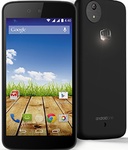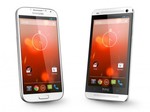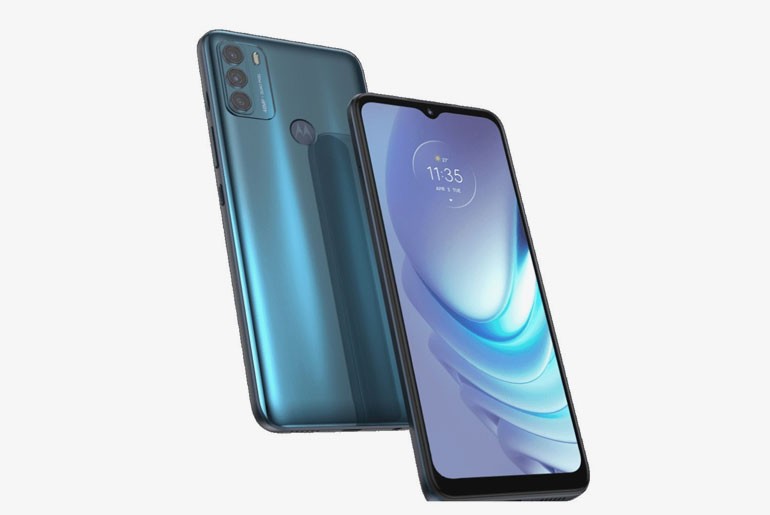OPPO Find X3 Pro Review - Android
The OPPO Find X3 Pro is very interesting. In a sense, its camera module and color look similar to the iPhone 12 Pro, but...
The post OPPO Find X3 Pro Review appeared first on YugaTech | Philippines Tech News & Reviews.
The OPPO Find X3 Pro is very interesting. In a sense, its camera module and color look similar to the iPhone 12 Pro, but we often find ourselves comparing it to Samsung’s Galaxy S21 Ultra. It’s not just because they have the same chipset, but there are more factors which include their powerful displays and set of cameras. We’ve had it for weeks now so let’s see what it has to offer.

Design and Construction
When you first see this phone, you’ll probably look twice too and might even ask “What? That’s OPPO?” Square camera modules have been around for a while now, but on the Find X3 Pro, it looks like a mirror view of the iPhone 12 Pro. We get four lenses that we’ll talk more about later on, then there are some subtle differences such as the oblong-shaped LED flash and the mic placement between the two main cameras. Plus, OPPO managed to make it look more refined by seamlessly blending it to the curved glass back. We like it! There’s still a bump, but attaching the free case makes it less protruding.

The unit we have is in the Blue color, and it has a nice matte finish on it together with a simple OPPO branding embedded. It’s IP68-rated for dust and water resistance, and ergonomically, it really fits to palm well even if you have small hands. Compared to its predecessors and other flagships for that matter, it’s surprisingly light and slim to grip—in a premium way.

Upfront is a vibrant 6.7-inch AMOLED display with slim bezels all around, a hole punch notch on the upper left, a front speaker on the upper middle, and an in-display fingerprint scanner on the low-lower part.

We get some antenna bands all around the sides and specifically on the right, you can find the power button with a green accent on it.

Meanwhile on the left is the volume trigger. They’re all tactile and easy to reach.

Up top is a secondary microphone, while at the bottom are its Dolby Atmos stereo speaker, USB-C port, main microphone, and a dual SIM tray that are both 5G capable. And yes, it doesn’t have a microSD card slot nor a headphone port, but we do get a free Type-C earphones in the package.

Overall, this design is simply stunning and we like how the blue variant doesn’t attract many fingerprint smudges. It can be slippery though so we suggest slapping a case on.

Display and Media
The Find X3 Pro stands out with a slightly curved 6.7-inch AMOLED screen with a resolution of 3216 x 1440px and a pixel density of 525ppi. It’s protected with Corning Gorilla Glass 5 and we also get a pre-installed screen protector on top.

It flaunts a 10-bit color display, which is a first for OPPO, so this means that it can provide 64 times more colors than a standard 8-bit display. Therefore expect rich and vibrant colors, as well as deep blacks. On top of all that, it packs a 120Hz adaptive refresh rate, HDR10+ support, 240Hz touch sampling rate, and a peak brightness of up to 1,300 nits.
Putting it side by side with the Samsung Galaxy S21 Ultra, the colors on the Find X3 Pro does seem a tad bit boosted, but if you’re not gonna nit-pick you really wouldn’t notice it that much. Either way, these two offer the best displays you can get on a smartphone to date.

In the display settings, there’s a lot to tweak around. If you’re a fan of dark mode, this one gives you numerous options, including a beta dark mode theme for apps that don’t have native dark modes like Lazada or LinkedIn. Then there’s the dark mode style which lets you choose if you want the deep black or enhanced mode, the medium style, or the gentle style if you don’t like the full-blown dark mode.

There’s a Nature Tone Display on board, which is much like Apple’s True Tone feature. And besides letting you adjust the screen color temperature, you can also choose the screen color mode from Vivid, Gentle, Cinematic, and Brilliant. The Brilliant mode is great but I wouldn’t recommend it when you’re going to edit photos on the phone then uploading them to social media. The colors wouldn’t be realistic. Oftentimes, we just stick to Vivid which is the recommended mode.
Additionally, there’s color vision enhancement that’s much appreciated for people with color blindness. Doing the test will help you get a more personalized color reproduction on the phone.

Now, let’s talk about the resolution and refresh rate. Just like Samsung’s S21 series, you can maximize the display to an immersive 1440p resolution and an adaptive 120Hz refresh rate simultaneously. While OPPO said that its adaptive refresh rate can drop down to 5Hz, however, in our experience we only got 120Hz and 60Hz—there’s no in-between. Most of the time it uses 120Hz, then it will drop to 60Hz for apps like YouTube, TikTok, and the Camera app. The experience could be different for other users. By the way, you can drop the resolution to FHD+ or Auto Select, as well as switch the refresh rate to the standard 60Hz if you want to save more battery.

Audio-wise sounds come out both from the earpiece and the down-firing stereo speaker. This combination provides clear tunes that can get loud enough for a medium-sized room without sounding too tinny.
The quality isn’t the best, but we get very good highs and some decent bass going on. With the Dolby Atmos support, you can personalize the listening experience with different sound profiles according to your preferred sound boost.
Cameras
Its quad rear camera setup is composed of a 50MP Sony IMX766 primary lens and another similar 50MP Sony IMX766 for ultrawide with PDAF. The third camera is a 13MP telephoto, while the fourth is a 3MP microlens with a ring LED flash. Meanwhile on that punch hole notch is a 32MP front shooter.

As OPPO managed to maximize a 10-bit display, they also pushed their cameras to save photos in 10-bit HEIF format. But it is not turned on by default so head over to the camera settings to turn it on. It’s quite ahead of its time. While not most people today can appreciate its glory, it can be really useful if you intend to edit your photos a lot or even professionally.
Using the standard mode gives you vibrant and sharp images with great dynamic range. If you want some minimal color and saturation boost, then you can leave the AI toggle on. The standard mode also provides a nice bokeh effect even if you’re not using portrait mode for those professional-looking photos.
Automatically, the camera switches to the ultrawide lens if you place it closer to your subject for an instant macro shot. You can take advantage of the two 50MP lenses by clicking on the drop-down arrow below the AI icon. Leaving it on will automatically turn off the 10-bit mode, which shouldn’t be a problem. And of course, what sets it apart from most camera smartphones is that it’s also available for ultra-wide takes. These high-res lenses give off crisp photos with great details. You can expect an almost similar color reproduction and dynamic range to the standard mode, but it’s available just in case you need the high quality.
The Find X3 Pro allows you to zoom in from 2x to 5x to 10x and up to 20x. With a good amount of lighting, we get clean zoom shots with colors that are still a bit close to the 1x normal mode. But if you want better zoom quality, then you can use the 50MP lens then crop the photo.
Things get more interesting as we talk about its 4th lens which is the microscope camera. As the name suggests, it is a microscope straight from your smartphone. It has its own flash to light up your micro subjects and to capture you have to purposely move the camera very close to it.
It’s a gimmicky feature that amazes us. If you have shaky hands you can take a video with it and just take the auto screenshot. It’s a unique feature that you can brag about, but after some time, will you still even use it? Maybe if you’re a fan of capturing up-close details, yes.
For night photography, without the night mode on, we often get well-lit shots that still look grainy and washed out. Once we used the night mode on, the shot greatly improved. There are still some muddy parts but we get better exposure with more details. Additionally, you can use the night mode even for the front camera.
As for selfies, its 32MP front shooter produces crisp photos with natural-looking colors on the skin. It’s very good for your social media posts and we like how the beauty mode doesn’t go overboard. Portrait selfies, look good too but it struggles with dynamic range. It just gets overblown and then performs well once we use the normal selfie mode.
Other features include pro, stickers, panorama, time-lapse, and dual-view video. Speaking of videos, the Find X3 Pro can shoot up to 4k at 60fps and you can toggle from ultra-wide to 5x zoom while shooting a video. For stabilization, you can turn on ultra steady mode or the ultra steady pro mode that’s limited only up to 1080p at 60fps.
There are additional video features that you can turn on in the settings, including Focus Lock, Inertial Zoom, and Audio Effects that can help you record better audio quality when shooting in landscape orientation.
OS, UI, and Apps
Running the software is Android 11 that’s skinned with ColorOS 11.2. This is the first time that we’re using the revamped ColorOS 11.2, and it has been convenient and customizable. There’s still a lot of bloatware, but you can always uninstall them if you like.

27/03/2021 04:39 AM
5G Smartphones Under PHP 25K
27/03/2021 05:47 AM
More Filipinos are patronizing home-based online businesses, study reveals
27/03/2021 07:46 AM
realme launches narzo 30A in PH
27/03/2021 12:31 PM
Logitech upgrades your WFH and gaming setups
27/03/2021 10:05 AM
Motorola’s Moto G50 has a Snapdragon 480 5G, 48MP triple cams
27/03/2021 10:59 AM
New “Order + Pick Up” feature on the Jollibee app lets you skip the lines
27/03/2021 09:07 AM
Cherry announces Spring Cleaning Sale
27/03/2021 02:30 AM
Fitbit Inspire 2 adds Tile finding technology
27/03/2021 08:56 AM
- HEALTH
- Comics
- Libraries & Demo
- Sports Games
- Racing
- Photography
- Transportation
- Media & Video
- Sports
- Health & Fitness
- Weather
- Medical
- Cards & Casino
- Arcade & Action
- Personalization
- Social
- Communication
- Productivity
- Casual
- Shopping
- Tools
- Brain & Puzzle
- Business
- News & Magazines
- Finance
- Lifestyle
- Music & Audio
- Entertainment
- Travel & Local
- Books & Reference
- Education
2014 © Filipino apps and news









